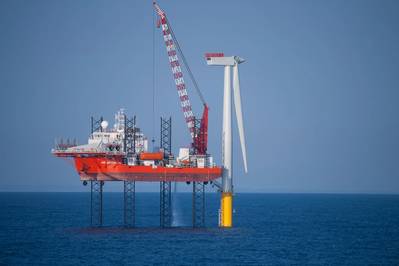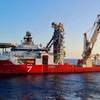Japanese Wind Fans Bank Interest
Domestic and international lenders are vying for a slice of Japan’s nascent offshore wind power sector, which is expected to provide as much as ¥3trn (US$29bn) in project financing opportunities, albeit at very low margins.
Akita Offshore Wind completed the nation’s first fundraising for a major offshore wind project last month, raising ¥80bn to build wind turbines near two ports in western Japan.
Auctions for sites off Japan's shores are due to kick off in April, and lenders are busy preparing for a rush of financings.
A total of 12.6GW of offshore wind farm projects were environmentally assessed as of August 2019, according to the Ministry of Economy, Trade and Industry. This translates into construction costs of approximately ¥7trn based on the estimated cost of ¥565m/KW. Bankers are expecting debt financings to total at least ¥1.5trn–¥3.0trn, although that figure could rise if all 12.6GW of projects make it to the construction phase.
"We have already been busy preparing for auctions of multiple deals where we are involved as financial advisors and we expect financial closing of these deals in the fiscal year of 2022,” said Keiichi Takahashi, director of power and infrastructure project finance department at MUFG.
The new law allowing the usage of general sea areas for the long-term development of offshore wind farms came into effect in April 2019. METI identified 11 potential sites for such projects, of which four are the most likely – two sites in Akita, one in Chiba and one in Nagasaki prefectures.
MODEST BEGINNINGS
Windfarms near existing ports and harbours have already begun to attract interest from domestic and international lenders.
In February, Akita Offshore Wind, a special purpose vehicle of a Marubeni-led, all-Japanese consortium, became the first borrower in the sector, agreeing a ¥80bn 20-year financing.
MUFG, Mizuho and Sumitomo Mitsui Banking Corp led the transaction, which funded 140MW of generating capacity in the Akita and Noshiro ports in Akita prefecture at a cost of about ¥100bn.
A Green Power Investment Corp-led 104MW offshore wind farm in Ishikari Bay, Hokkaido, could be the next project to reach financial close as early as the next fiscal year, according to bankers.
Although a dozen lenders – including one foreign bank, Societe Generale – piled into Akita Offshore Wind’s deal in general syndication, only a limited number of banks in Japan would be able to drive and lead transactions in the wind farm sector.
This is where international banks could fill the void, especially in auctions where multiple consortia require financial advisers, bankers said.
“Some international banks are definitely showing interest in these projects. European export credit agencies are, for example,” said MUFG’s Takahashi. “A jumbo deal in general sea areas may not be able to secure enough funding from only Japanese investors.”
TIGHT PRICING
Offshore wind farm PF deals in Japan are likely to offer attractive pricing for domestic lenders with interest margins of around 100bp over Tibor, versus single-digit margins for plain-vanilla corporate loans or two-digit margins for solar power deals.
That said, loan margins in Japan are significantly lower than in the rest of the world. The average interest margins for similar deals in Taiwan, Asia’s leading offshore wind market, are more than double.
The commercial tranche for Danish wind energy developer Orsted's NT$61.9bn (US$2bn) 20-year PF backing its offshore wind farms project off Taiwan’s west coast pays an interest margin of 210bp over Taibor. The export credit agency-backed portion offers margins ranging from 75bp to 85bp.
Similarly, the commercial tranche of Danish company Copenhagen Infrastructure Partners’ NT$90bn PF, which is the largest deal in Taiwan’s offshore wind market, pays a margin of 240bp during the construction period.
The transaction subsequently steps down to 210bp during the first five years of operation. From the sixth year of operations until maturity, the margin will step up to 230bp.
“We can hardly lend to Japanese offshore wind projects as those PFs are too tightly priced,” said a senior loan banker from a top-tier Taiwanese bank which participated in both deals. “The pricing does not really reflect the high risks of those long-tenor and non-recourse PFs, let alone cover our funding costs.”
“In addition, with the market growing so quickly, our liquidity is stretched and we can only lend to those wind-farm PFs with better returns,” the banker said.
(Reuters reporting By Wakako Sato and Evelynn Lin; Editing by Chien Mi Wong and Steve Garton)














